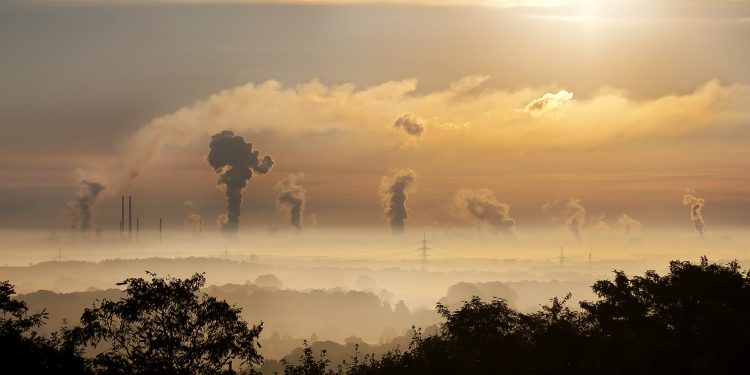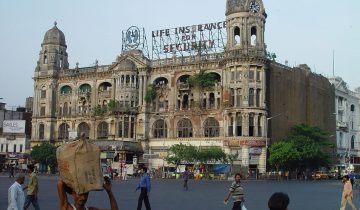Air Pollution in Delhi- Not Just a Seasonal Crisis

Introduction
The industrial and technical advancement in India leading to its development at a high pace after India’s historical struggle for independence has come at a great environmental cost.
According to the Global Environment Performance Index (EPI) 2018, developed by Yale University and Columbia University, India is ranked 177 among 180 countries. This rating is linked to India’s poor performance in the public health category and the number of deaths due to air pollution, showcasing its inability to maintain a healthy ambience. Also, India has 9 out of the 10 most populated cities of the world.
Furthermore, Delhi has been tagged as one of the most polluted capital cities of the world with an unhealthy Air Quality Index (AQI) swinging mostly between ‘poor’ and ‘very poor’ categories. This quality of air is experienced by people throughout the year, but the condition becomes worse in winters when fog envelops the city, converting into toxic smog. Over the years, Delhi’s problem of air pollution has become more complex. The population of Delhi is basically living in a gas chamber with lethal air quality.
A lot of factors contribute to the poor AQI in Delhi. The condition just happens to worsen during a few months. The majority of the blame is attributed to burning of paddy straw by farmers and fire crackers during the Diwali festival in months of October and November. However, stubble burning by the farmers in neighbouring states is episodic and lasts for a few days only and while the Diwali festivities also contribute to the poor Air Quality Index (AQI), they are not the sole reasons for the pollution.
Air pollution in Delhi is a complex reaction which involves various industries as catalysts, including the transport industry, industrial emissions, biomass burning, and dust. Furthermore, political will also adulterates the AQI.
Air Quality Measurement Facts-
According to the WHO, air pollution is the fifth largest killer in India. There are a variety of ways in which the air pollution of an area can be measured. One of the ways is the measurement of particulate matter in air. Particulate matter is a mixture of extremely small particles and liquid droplets like acids, chemicals, gas, water, metals, soil dust particles, etc. These particles cause major health hazard in India. The changing temperature and slowing winds trap soot, dust and fine particulate matter. The particulate matter is present in a variety of sizes ranging from coarse, fine, to ultrafine.
Most important to note are PM2.5 (particles with a size less than 2.5 micrometres) readings recorded by forums and government organizations during environmental studies. These particles are emitted by various sources like industrial exhausts, vehicular emissions, forest fires, rapid construction, agricultural burns, volcanic eruptions, etc. They are considered to be the most dangerous of their counterparts (e.g. PM10) because they can stay in the atmosphere for longer due to light weight and small size, thereby increasing the chances of humans and animals inhaling them into their lungs and eventually leading to respiratory and cardio-vascular disorders.
According to the Ambient Air Pollution (AAP) report for the year 2018, Delhi had one of the highest PM2.5 pollution levels in the world. This result was based on the monitoring of PM measurement of outdoor air pollution from almost 1,600 cities in 91 countries. Last year, a public health emergency was declared in Delhi as pollution levels crossed 70 times the safe limit.
The UN Environment Programme’s recent report titled ‘Air Pollution in Asia and the Pacific: Science-Based Solutions’ has sounded a warning, pointing out that only 8% of the population in the countries of the region get to breathe air of acceptable quality.
One study of the degradation of Delhi’s air over a 10-year period beginning 2000 estimated premature mortality to have risen by as much as 60%.
Sources of Delhi’s Degraded AQI –
According to research conducted by the Automotive Research Association of India (ARAI), Pune and The Energy and Resources Institute (TERI), New Delhi; various sources of pollution in Delhi and other nearby areas have been identified by assessing PM2.5 levels.
Vehicular emissions contribute to 28% of total pollution. It includes emission of harmful gases by tractors and trucks, two-wheelers, cars and buses, and other light commercial vehicles.
The contribution of dust from construction sites is 3% and industries like power plant generators, brick kilns, stone crushers, and other small industries contribute 30%.
Delhi’s residential areas contribute 10% to pollution.
The study made it clear that stubble burning by the farmers in Haryana, Punjab and western Uttar Pradesh contributes to only 4% of the pollution. However, this value spikes during the winter season, contributing 30% of the total pollution.
Therefore, the report clearly suggests that industries and vehicular emissions are the real culprits of pollution. It is only in a particular season that we see the drastic effects of stubble burning.
Politics and Pollution-
Failure of the Legislation, Executive, and Judiciary
India has one of the best policy and program makers in the world, but implementation remains a matter of concern because of political will. Moreover, the government-run, coal-fired power plants are setting wrong examples for other private industries by disrespecting the timelines and deadlines to clean up emissions from their chimneys. The withdrawal of the Odd-Even Vehicles rule (which stated that private vehicles could be used on the road only on certain days, depending on their license plate number) implemented by Kejriwal’s Government in the year 2016 remains unexplained. Subsidised machines are largely unable to reach the farmers and if reach, are too low in numbers.
‘The Right to Clean Air’ bill is not able to find its acknowledgement in the discussions and debates of parliamentary sessions despite the country’s deteriorating air quality. This is because most of the Indian politicians take air pollution to be a seasonal crisis wherein reality it is an annual menace. Moreover, Indian politicians do not participate actively in environment related issues globally and maintain a low profile. Both the Health Minister and the Environment Minister of India did not attend the World Health Organisation’s (WHO) first global conference on air pollution and health at the General Assembly of Global Urban Air Pollution Observatory (GUAPO) in Geneva, Switzerland.
During Diwali, the festival of lights, India’s Supreme Court banned all the firecrackers except those certified ‘Green’. The court allowed citizens to burst crackers only between 8-10pm. The orders of the court were violated with impunity. People burst crackers beyond the limit and there was no check put on them by police officials. The outcome of this was that a thick layer of smog covered the sky of the city the next morning.
India is gearing up for parliamentary elections in 2019. Every party is securing their ‘vote bank’. The key causers of air pollution- industrial and vehicular emissions- are also the major source of ‘vote banks’ for the parties. So, clearly no party is willing to take on these groups. It is going to be the general public who will be the victims.
Conclusion:
It has been proven by various studies that the problem of air pollution in Delhi is not seasonal but an annual threat. A variety of sectors add to the problem. Therefore, sector by sector monitoring, analysis, regulation and implementation of policies can help solve the problem.
Solutions
Strict road pricing mechanisms can help in the reduction of private vehicle use. Escalated parking fees can also reduce private vehicles on road. The city should reorient its investment to prioritise public transport and switch over to electric mobility. Also, mechanised cleaning of roads and sprinkling of water can check pollution. The entry of illegal trucks should be stopped in Delhi. Switching over to CNG and LPG by the households can check residential pollution. Strict fines for the violators of traffic rules should be imposed.
The government can use climate change funds to turn farm residues into a resource, using technical options like converting them to biofuels or fertilizers. It is also necessary to invent new ways to use stubble which may encourage farmers to look for alternative income sources.
Enforcement of pollution control and PUC norms in thermal power plants and other industries can help reduce industrial emissions.
The problem of air pollution is mammoth and needs to be dealt by analysis and implementation of strong policies pertaining to each factor contributing to the problem. Only by political will and co-operation of its citizens can Delhi solve its pollution problem.
Image Attribute: Pixabay




